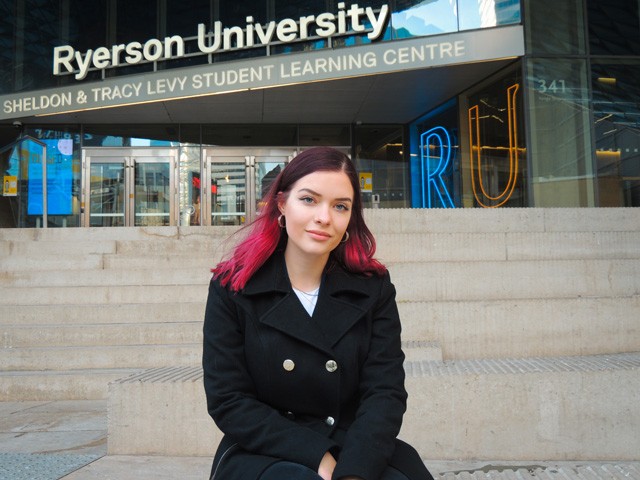Driving innovation in the use of nuclear technology

Natasha Hedden
Before starting her graduate work in biomedical physics in the fall of 2020, Natasha Hedden had spent a year working as an assistant operator at the McMaster Nuclear Reactor. She would help with starting the reactor in the morning and loading iodine rigs into the core—rather unusual work experience for an undergraduate student. With this unique background, why choose Ryerson for her master’s program?
“I want to become a clinical medical physicist,” says Hedden. “Ryerson’s graduate program in biomedical physics is fully accredited by the Commission on Accreditation of Medical Physics Educational Programs (CAMPEP). It’s the only university in the GTA that offers a CAMPEP-accredited program, which is mandatory for post-grad residency programs in my field. This is the place to be.”
It’s also where Hedden learned she had been recognized by the International Atomic Energy Agency (IAEA) and awarded the Marie Sklodowska-Curie Fellowship, which provides financial support for her master’s program studies. The mandate of the IAEA is to “accelerate and enlarge the contribution of atomic energy to peace, health and prosperity throughout the world,” and the Fellowship aims to inspire and encourage young women to pursue a career in nuclear science and technology.
“My career goal is to use nuclear technology to treat illness and better people’s lives,” she says. “I would like my research to help expand the use of nuclear technology within the medical physics field so it is a more accessible option. Cancer treatment is one application, though I’m not sure yet what area I will focus on.”
Hedden is grateful for the additional funding, which prevents her from requiring loans during her master’s studies. Raised by a single parent along with her three siblings, she is familiar with the financial strain many students face and the disheartening prospect of graduating with significant debt.
“The award allows me to focus on my studies and my research,” she says. “It also frees me up to spend more time with the amazing people in the physics department. I’m so impressed by the depth of knowledge here and also by the support I’ve received. This is such a welcoming place.”
Under Dr. A. Pejović-Milić’s supervision, Hedden’s research currently focuses on the potential toxicity of gold nanoparticles on a cellular level. These nanoparticles are used for cancer treatment, drug delivery and as a contrast agent, but there is an ongoing debate about safety: some researchers suggest they are toxic and others that they’re not. To learn more, Hedden is looking at the viability of cells after nanoparticle incubation of varying concentrations and for various lengths of time.
“It’s exciting being here, doing this work,” she says. “And it’s an honour to receive the Marie Sklodowska-Curie Fellowship as a woman in this field. I hope to live up to its mandate and put my research to use for greater health and prosperity.”
“Natasha is an exceptional graduate student with a commitment to learning and research,” said Dr. A. Pejović-Milić, chair of the Department of Physics. “Our graduate program is fortunate to attract such brilliant young people to Ryerson and Medical Physics. Congratulations, Natasha!”